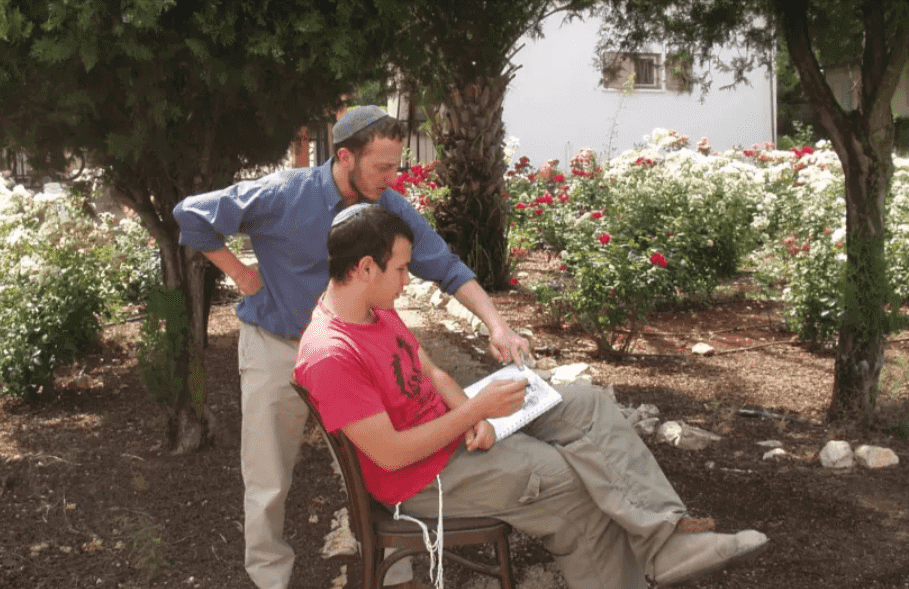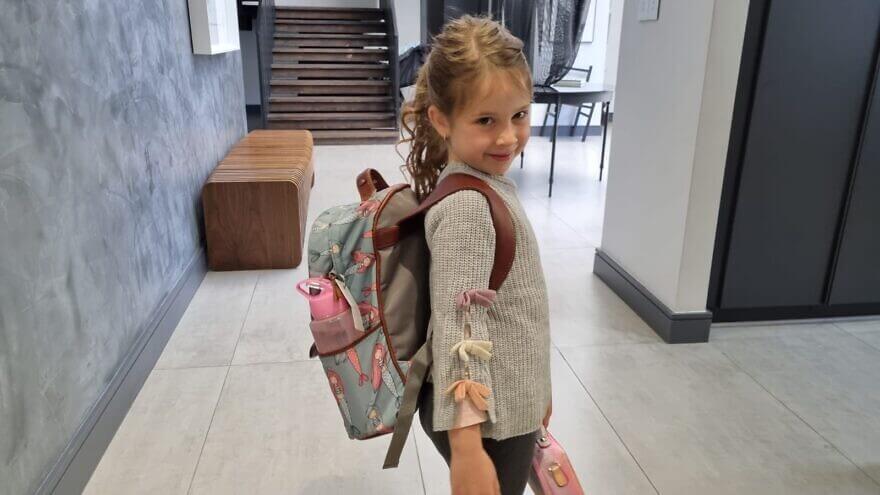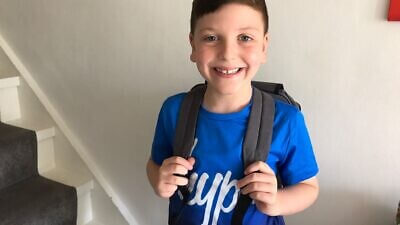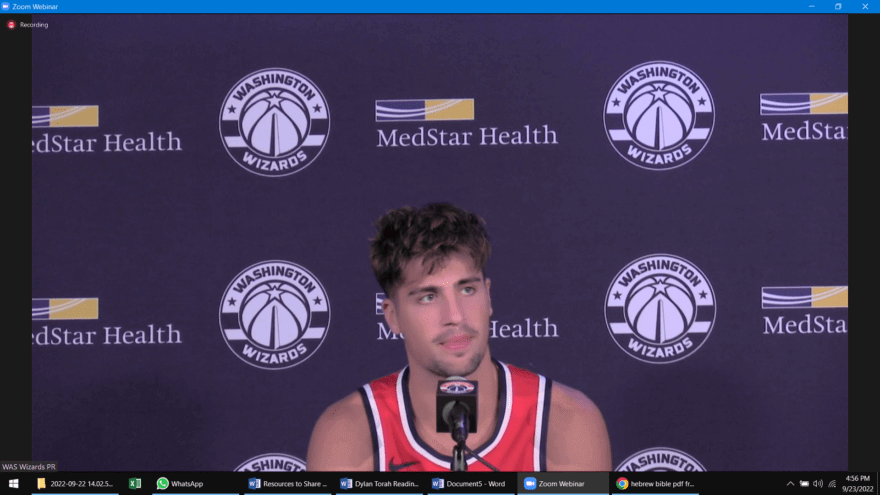Original Article Published On The JP
“I hope to maintain these relationships I formed at yeshiva. I think it will help me at university. I hope to continue actively and passively including people at all times.”
When Rabbi Shmuel Reiner learned from a mother at his local synagogue in Israel that her autistic son had no options for studying in a yeshiva, he grew frustrated.
“He wants to learn in a yeshiva, and his parents want him to learn in a yeshiva. And there was no yeshiva for him? That upset me,” reports Rabbi Reiner, founder and yeshiva head at Yeshivat Ma’aleh Gilboa, located on the summit of Mount Gilboa.
An inclusive yeshiva
Shiluv Hameshalev, the yeshiva study and community service program, was founded in 2012, and currently includes 10 young men on the autism spectrum.
“Torah must go with moral sensitivity,” Rabbi Yehuda Gilad, the program and the yeshiva’s co-founder and co-rosh yeshiva, offers. “It is win/win for all learners.”
Both rabbis were committed to the project from the beginning, but were keenly aware of the limitations of their professional areas of expertise.

“I am a rabbi, not a social worker,” Reiner notes.
Experts in the special education community advised him to “decide on a population [of disability types],” noting that each disability requires specialized support.
Reiner and his colleagues were aware of the social challenges students on the autism spectrum might face, but felt this demographic would have a high likelihood of success if the yeshiva program was designed thoughtfully and with the appropriate accommodations.
Program director Dr. David Lester, a bibliotherapist and teacher, describes Shiluv as filling a gap for religious boys who graduate high school without a suitable framework.
“The uniqueness of the program is that it is not a hostel or a therapeutic setting, but a yeshiva program integrated into a normative community,” he said.
A key tenet of the two-year program is that study is integrated. Reiner feels strongly that students on the autism spectrum should not study separately from the other yeshiva students.
Students in the Shiluv program spend mornings performing community service and studying for one or two hours daily with their typically developing peers. They pray together, eat breakfast, and work on an educational agricultural farm until noon. After the lunch break, some Shiluv students participate in classes given to the general yeshiva, and some gather in study groups designed for them.
The Shiluv students meet once a week with a therapist for individual and group therapy sessions. Electives offered by kibbutz volunteers include music, creative writing and computers. Men in the program are often hosted by kibbutz members for Shabbat meals.
Gateway to National Service
This year, some students will also work on a farm at nearby Kibbutz Ein Hanatziv. Their work on both farms is considered equivalent to National Service. Participants thereby fulfill Israel’s requirement imposed on young men to serve their country through either military service or community service.
Yosef Zaner, 21, a student in the Shiluv program who made aliyah with his family from Atlanta nine years ago, was drawn to the yeshiva in part for the reason that it would allow him to fulfill his requirement for National Service.
Zaner was not eligible for full army service, due to his disability, but, through the program, worked on the farm, where he assisted with planting, farming, carpentry and woodworking.
“I built stuff for the farm – and I made a big puzzle – like the game Rush Hour, inspired by watching the Survivor TV show.”
A mutually beneficial relationship
When Davi Frank of Riverdale, New York, was considering studying at Ma’aleh Gilboa, he saw the yeshiva’s brochure where, in small print, it mentioned the opportunity of studying together with people with disabilities.
“At the time, it seemed nice, [but] then [I] didn’t think more about it,” Davi says. “I learned at Ma’aleh Gilboa for two years, and it became a crucial element of both years!”
As Frank became more established in the yeshiva, he began leading a habura class for students in the Shiluv program. It didn’t take him long to appreciate how amazing his students – and his peers – were.
“They are so smart and so engaged. You see quickly that they are here to grow and have similar goals as us. They make such an effort to learn.”
The relationship among the yeshiva, its students and the Shiluv participants is mutually beneficial.
Reiner appreciates Zaner’s many gifts and level of commitment to the yeshiva. “He was a hazan (prayer leader) and Torah reader, and you could see his confidence. He was not shy in the yeshiva.”
Challenges for students
While each Shiluv student presents many strengths, there are also challenges. As an example, many on the autism spectrum have difficulties with changes of routines, loud noises and sarcasm.
Frank recalls one Purim when a Shiluv student became overwhelmed, appeared to having a panic attack, and began screaming at Davi during a good-natured skit. Davi was able to calm down the young man.
“It was scary for a few minutes,” Frank recalls.
Heidi Zaner, Yosef’s mother, appreciates the yeshiva’s ability to understand her son’s level of required support.
“He sometimes talks beyond the time that people want to listen, and the students understand how to be kind, and how to rotate in and out as havrutas [study partners].”
The Shiluv program also creates other challenges. As Reiner notes, “logistics are sometimes complex, and the intensive staffing and small class size comes at a financial cost.”
Long-lasting benefits
Davi Frank, who started his college studies at Princeton University after two years at Ma’aleh Gilboa, looks forward to applying in college, and in life in general, the lessons he learned about inclusion.
“I hope to maintain these relationships I formed at yeshiva. I think it will help me at university. I hope to continue actively and passively including people at all times,” he said. “Once you become used to including people, it becomes automatic.”
Getting out the word
While the program has been in existence for 10 years and has the potential to serve as a model for other study programs, it continues to be not very well known in the yeshiva world in Israel or in the United States.
Additional information can be found online at https://www.israelnextyear.org/israel-programs/Ma’aleh-gilboa and on YouTube.





